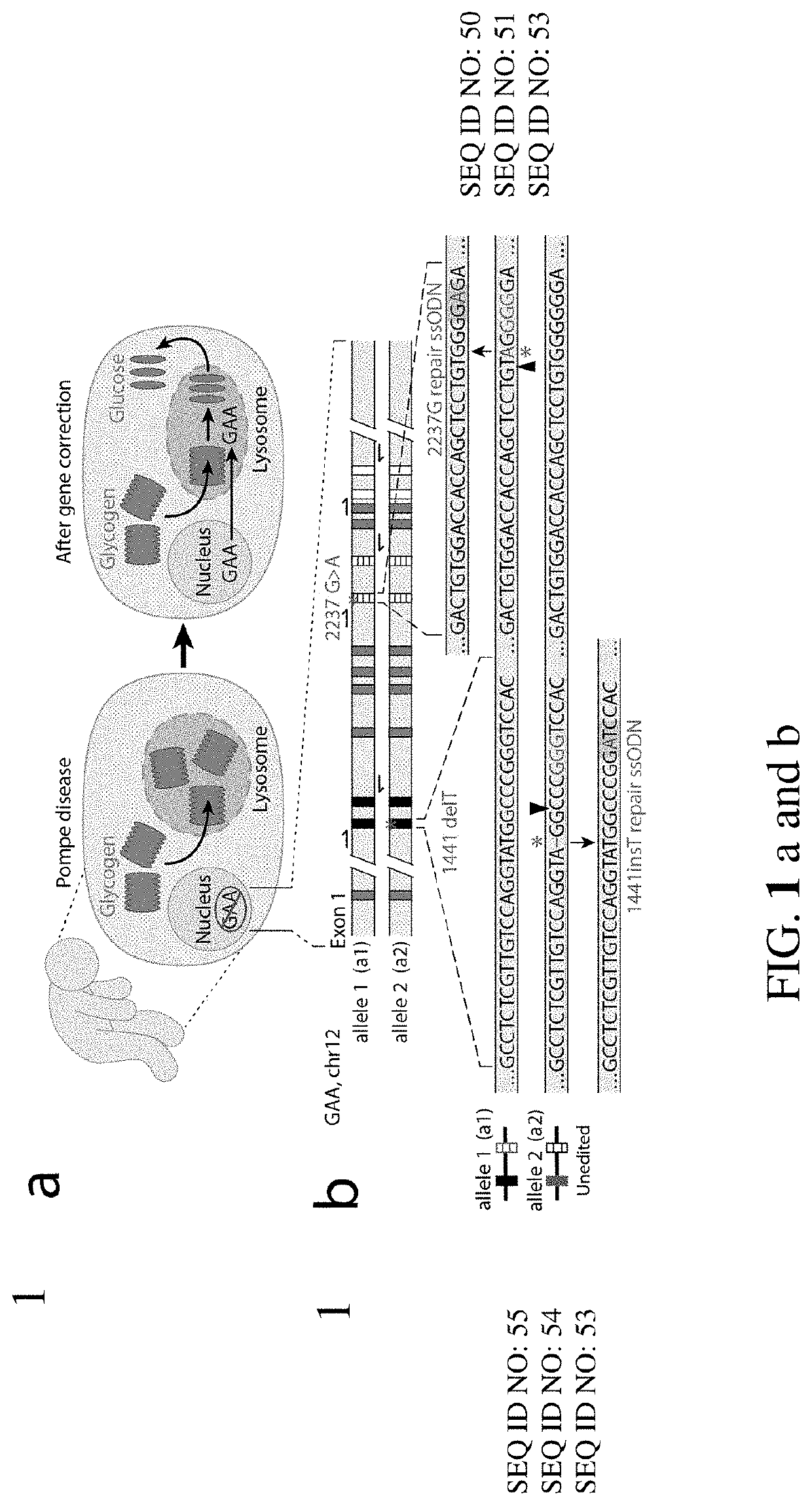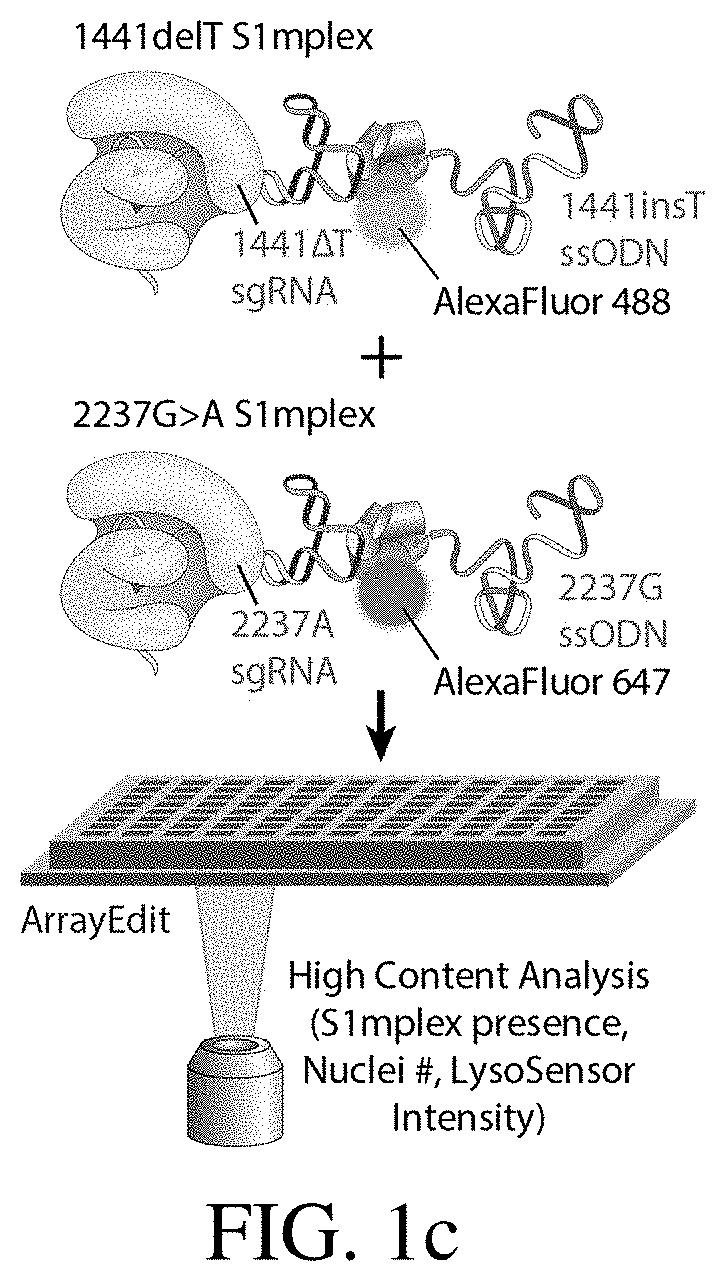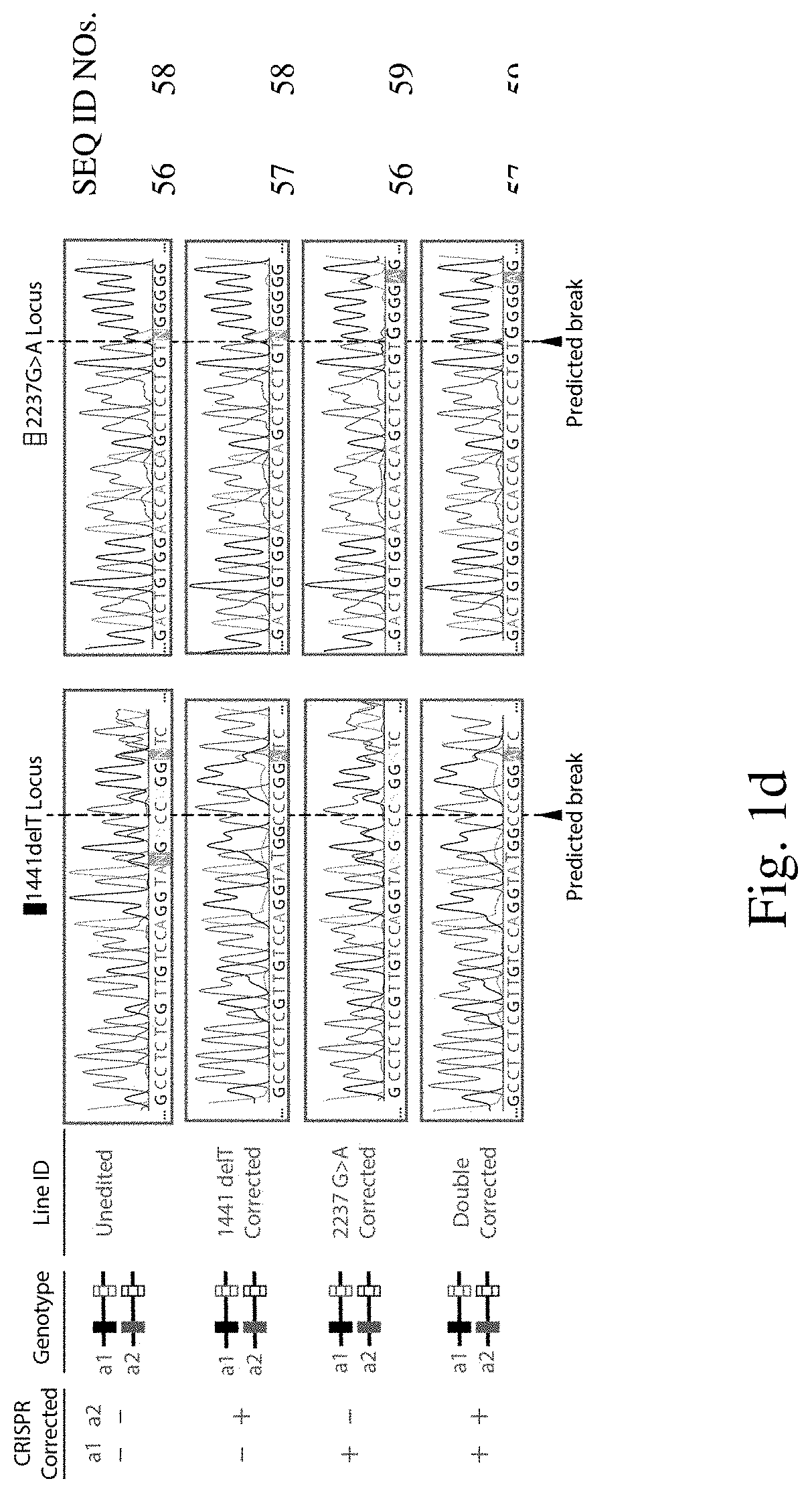Gene correction of pompe disease and other autosomal recessive disorders via rna-guided nucleases
a technology of autosomal recessive disorders and gene correction, which is applied in the field of autosomal recessive diseases treatment, can solve the problems of inconvenient treatment, high treatment cost, and inability to correct and none of these approaches retain endogenous gaa regulation nor have they corrected the underlying gaa mutation
- Summary
- Abstract
- Description
- Claims
- Application Information
AI Technical Summary
Benefits of technology
Problems solved by technology
Method used
Image
Examples
example 1
n of Two Diseased Alleles within Pompe iPSCs
[0205]To explore whether two corrected endogenous alleles within the same cell is possible, several clonal isogenic iPSC lines were generated by CRISPR-Cas9 gene editing of an iPSC line derived from a patient with infantile-onset Pompe disease. In this line, compound heterozygous GAA mutations responsible for the disease phenotype are a deletion of a thymidine nucleotide at position 1441 (GAA:c.[1441delT], “1441delT”) causing a frameshift, and premature stop codon on one allele, and a G>A conversion at nucleotide 2237 (GAA:c.[2237G>A], “2237G>A”) forming an immediate stop codon on the other (FIG. 1b). The mutations within GAA in this patient are ˜6.1 kb apart, and hence using a single double strand break (DSB) with homology directed repair from a long plasmid or viral donor would likely be inefficient. We therefore used a strategy utilizing two distinct Cas9 ribonucleoproteins (RNPs) with accompanying single stranded oligonucleotide (ssODN...
example 2
Cross-Correction by Gene-Corrected Cells
[0210]Detection of active GAA secretion led us to test the potential of edited cells to enzymatically cross-correct diseased cells (FIG. 3a). Because Pompe disease has a significant effect on cardiac tissue in infants, we differentiated all iPSC lines to cardiomyocytes (Pompe iPSC-CMs) using a previously described small-molecule inhibitor protocol (FIG. 3a). For all differentiations, we observed spontaneous contraction and confirmed the expression of α-actinin, a marker of cardiac lineage commitment. Similar to results seen in the iPSC state, differentiated corrected lines still expressed and secreted active GAA, as indicated in a 4-MUG cleavage assay on cardiomyocyte protein lysates and spent culture media. It has previously been demonstrated that by culturing in medium devoid of glucose, Pompe iPSC-CMs display an accumulation of glycogen within the lysosome. We performed a medium exchange experiment wherein we took partially spent, glucose-f...
PUM
| Property | Measurement | Unit |
|---|---|---|
| CFX96 Real Time PCR | aaaaa | aaaaa |
| CFX96 Real Time PCR | aaaaa | aaaaa |
| pH | aaaaa | aaaaa |
Abstract
Description
Claims
Application Information
 Login to View More
Login to View More - R&D
- Intellectual Property
- Life Sciences
- Materials
- Tech Scout
- Unparalleled Data Quality
- Higher Quality Content
- 60% Fewer Hallucinations
Browse by: Latest US Patents, China's latest patents, Technical Efficacy Thesaurus, Application Domain, Technology Topic, Popular Technical Reports.
© 2025 PatSnap. All rights reserved.Legal|Privacy policy|Modern Slavery Act Transparency Statement|Sitemap|About US| Contact US: help@patsnap.com



